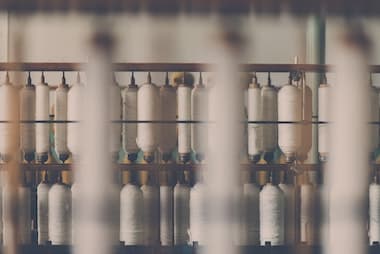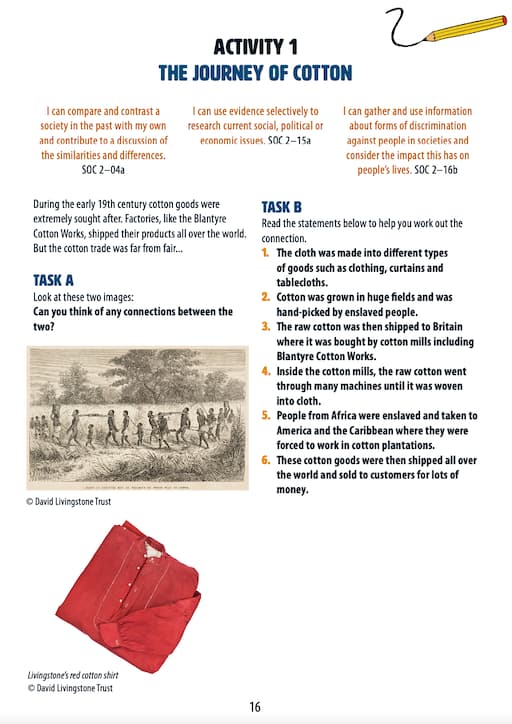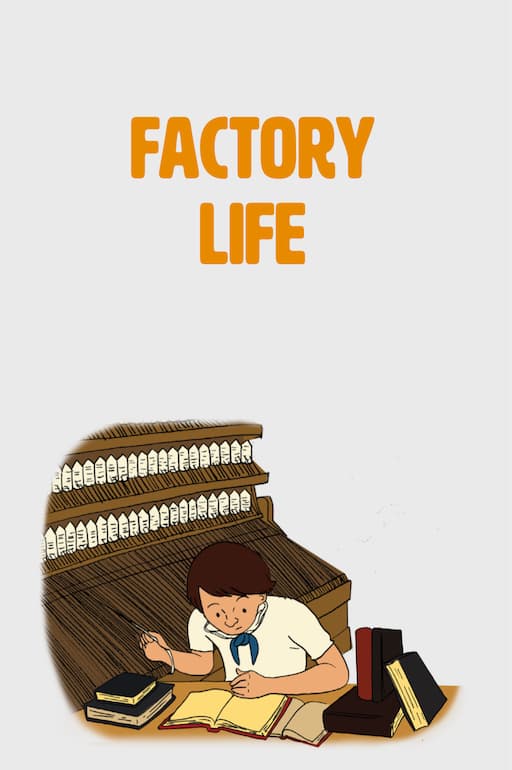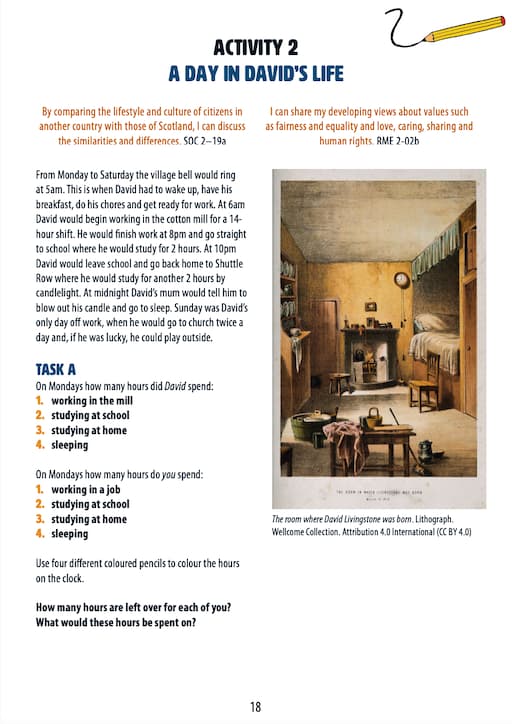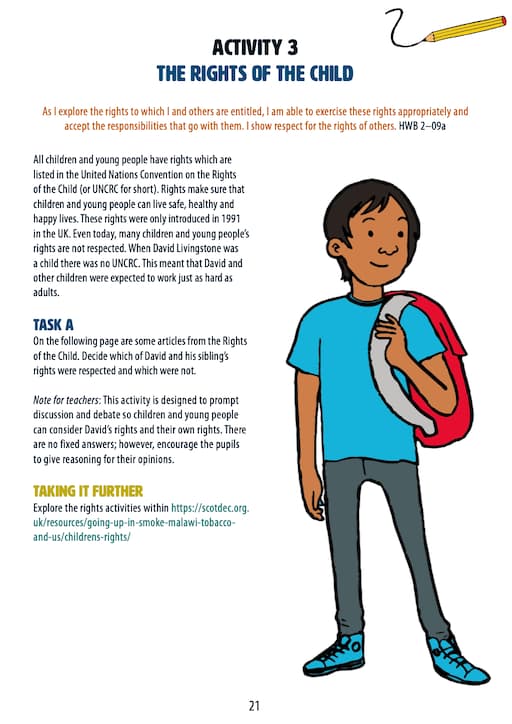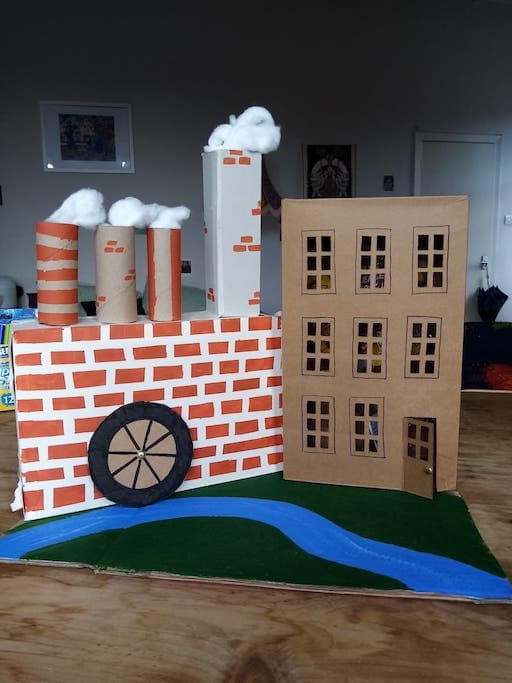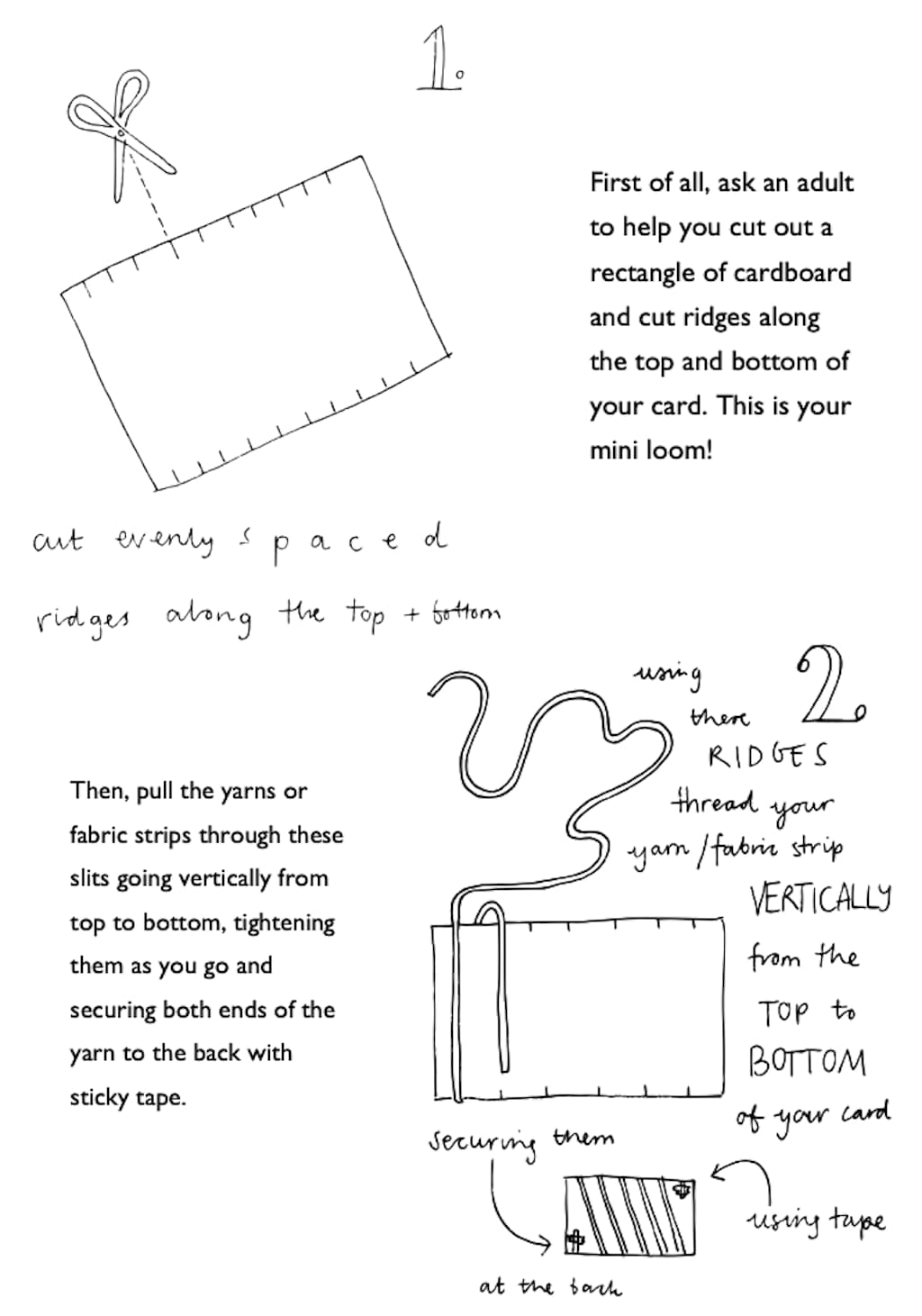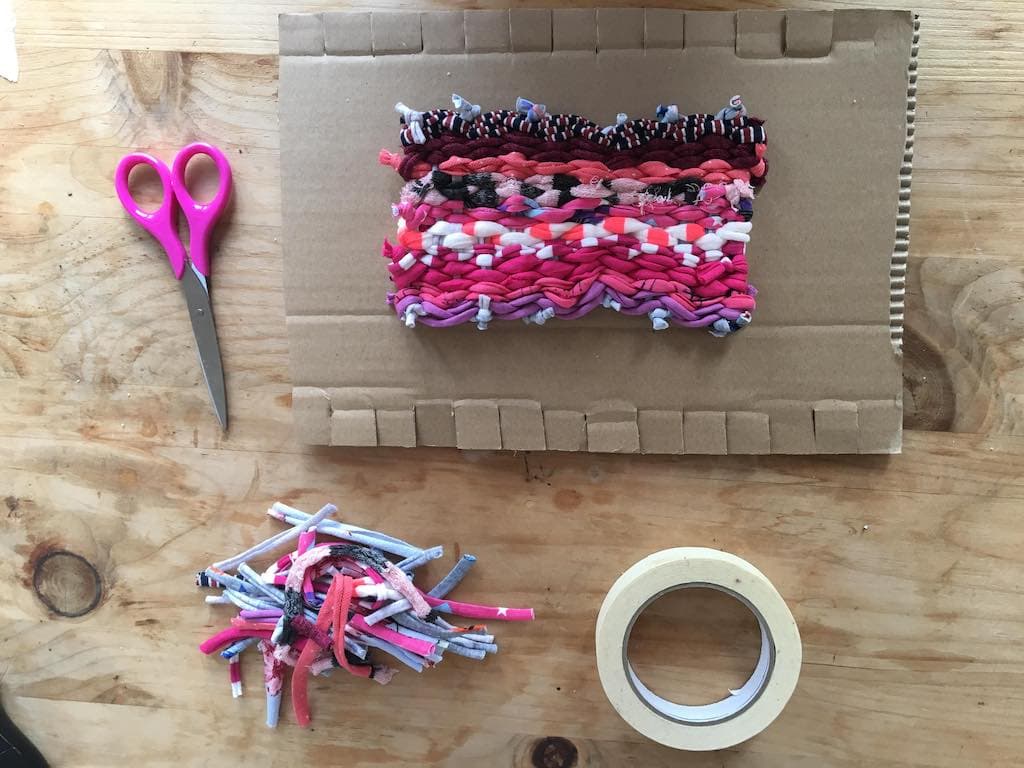David grew up during the Industrial Revolution. This was a time when inventions in technology helped industries develop -
as machines took over jobs which used to be done by hand, meaning they could be done a lot quicker.
Thanks to new machines, the cotton industry in Scotland grew during this time.
Enslaved people forced to work on plantations in America and the Caribbean grew and picked raw cotton.
This cotton was then shipped to Scotland where it was woven into cloth in factories called cotton mills. The cloth was then sold all around the world.
David was born on 19 March 1813 in the factory worker’s accommodation, Shuttle Row.
He lived here with his family in a single room, known as a single-end. At one point, there were seven people in the Livingstone family home – David, his father and mother, and his two brothers and two sisters. It was very cramped!
The Livingstone family were poor, so at the age of 10 David began working in the cotton mill as a piecer.
His job involved ducking under the cotton spinning machines to tie together the broken threads.
This was a very dangerous job because the machines were moving all the time, so he had to be careful not to get injured.
Life in the mill was difficult, with strict bosses, long working hours, low wages and loud machines that could cause deafness.
After a long day at work, working from 6am to 8pm, David went to school in the evening.
Through hard work, study and ambition he left the cotton mill to pursue his dream of becoming a missionary doctor.
These resources are designed to link the Curriculum for Excellence objectives with
Sustainable Development Goal 8
and
Sustainable Development Goal 12 as well as the
United Nations Convention on the Rights of the Child.
